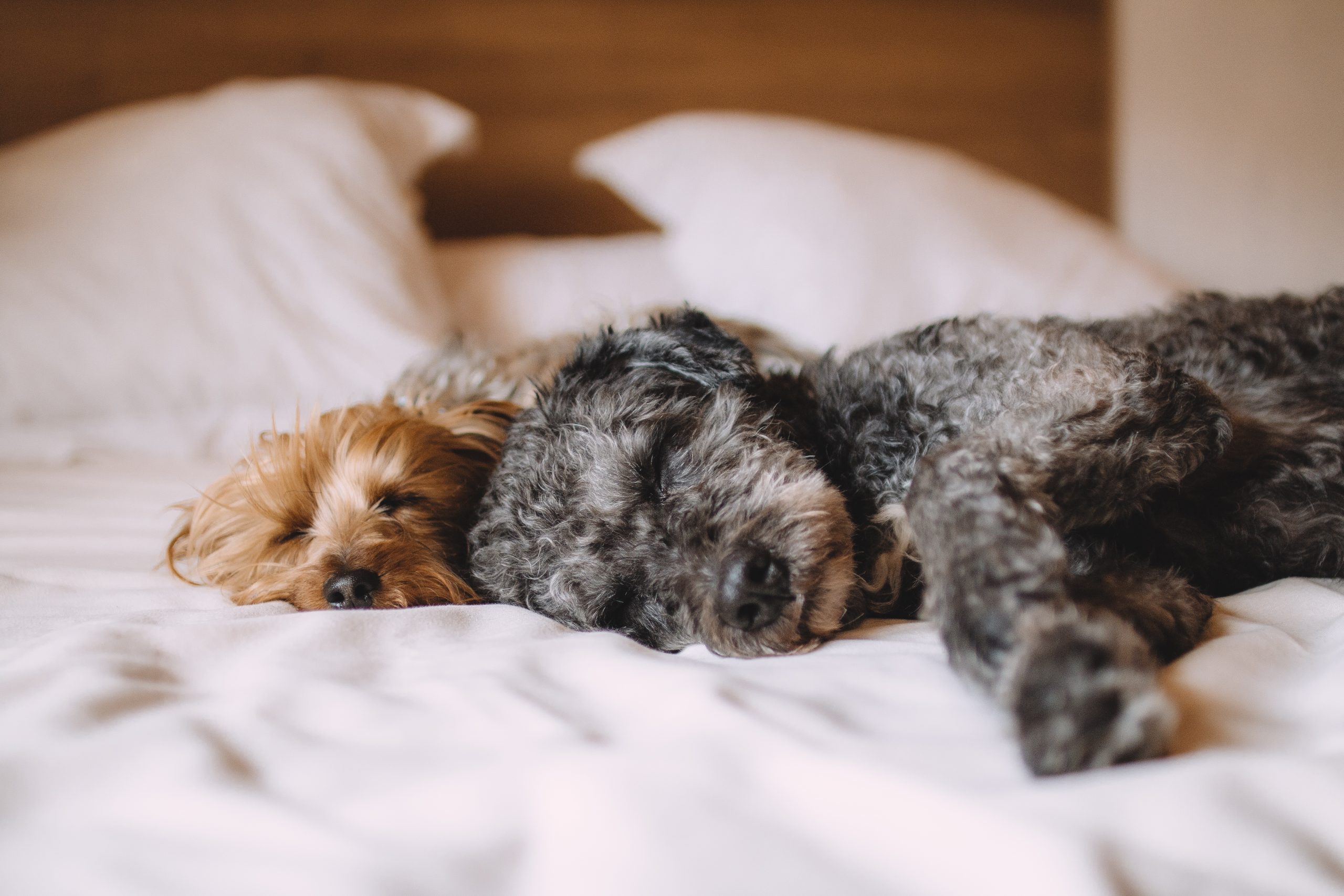Table of Contents
Are you a dog lover or you know somebody who loves his dog so much? This post is for you. You will learn different dog sleeping positions and their meaning. At the end, you will feel more connected to your dogs and understand why they sleep the way they do.
As a bonus, at the end, you will learn some simple tricks you can use to teach dogs how to do some basic things such as give high five.
But before I start with the list, allow me to make a little history. Dogs are probably the first tame animals. According to some scientists who believe in evolution, they have been with humans as pet for thousands of years and possibly as many as 40,000. The creationists believe the earth has about 7000, so dogs have been with human for about that period.
Dogs are called man’s best friend the fact they loyal companion and even more loyal to their owners than human being. But we still have a lot to learn about them, including their sleeping habits.
Dogs sleeping positions and habits say a lot about their personality, health, and feeling. Here are 8 dog sleeping positions and what they mean.
-
The The donut position
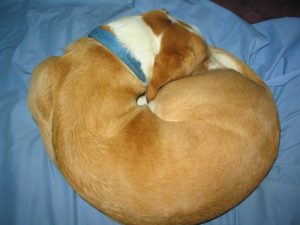 This is the sleeping position when your dog tucks his paws beneath his body and curls up so his head is resting on his tail. It looks like your dog turned into a bagel. Your dog might be trying to preserve body heat and protect the fundamental parts of its body.
This is the sleeping position when your dog tucks his paws beneath his body and curls up so his head is resting on his tail. It looks like your dog turned into a bagel. Your dog might be trying to preserve body heat and protect the fundamental parts of its body.
The donut is the most common dog sleeping position for animals because it provides warmth and protects their vital organs.
-
Crazy legs Position
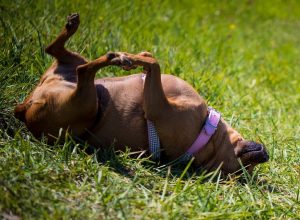 This is when your pooch lies on his back and stretches out his legs. This implies that the canine s confident and relaxed in its surroundings. Dogs that sleep in this position are independent with a calm nature. But having all the 4 legs in the air is also associated with some vulnerability; the dog’s stomach and organs are completely exposed.
This is when your pooch lies on his back and stretches out his legs. This implies that the canine s confident and relaxed in its surroundings. Dogs that sleep in this position are independent with a calm nature. But having all the 4 legs in the air is also associated with some vulnerability; the dog’s stomach and organs are completely exposed.
If your pet is sleeping in this position make sure the environment is safe.
-
Cuddling or Cuddle bug position
 If your dog likes to cuddle up with you, that means it trusts and wants to bond with you. For domestic dogs, cuddling usually takes place during early days. As they grow, this position becomes more of a habit. If you have many dogs in your home, you may notice they sleep back-to-back from times to time.
If your dog likes to cuddle up with you, that means it trusts and wants to bond with you. For domestic dogs, cuddling usually takes place during early days. As they grow, this position becomes more of a habit. If you have many dogs in your home, you may notice they sleep back-to-back from times to time.
Wild animals also do it. For instance, wild dogs incline to huddle to together for warmth and protection in the wilderness. In this case, the cuddling is an instinctual mean for them to show they are part of the pack.
-
Superman Position
 This funny position occurs when your pet dog sleeps on its stomach with its limbs outstretched looking like it is ready to channel its inner superhero and take flight. It’s like the dog is telling you it is in mood to play. This is one of the most common dog sleeping positions among puppies, mostly because it is easier for them to wake up and jump right back into playing.
This funny position occurs when your pet dog sleeps on its stomach with its limbs outstretched looking like it is ready to channel its inner superhero and take flight. It’s like the dog is telling you it is in mood to play. This is one of the most common dog sleeping positions among puppies, mostly because it is easier for them to wake up and jump right back into playing.
In short, the Superman position is definitely an indication your loving pet feels energetic and wants to have fun.
-
Side sleeping Position
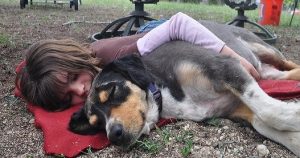 This sleeping position is an indication that your pet has no worries – it is cool as a breeze.
This sleeping position is an indication that your pet has no worries – it is cool as a breeze.
Dogs who sleep like this usually have an affectionate and close bond with their owners. The same, If your doggie sleeps on its side, it can be taking a nap; although it is possible for some breeds to sleep like this for longer time.
Side sleeper dogs tend to be very calm and kind. Side sleepers usually have a strong bond with their owners.
-
Lion’s pose
 The lion pose position is the fact a dog is lying on its stomach and resting its head on its paws. The lion position means the pet is simply resting, not a deep sleep. It’s common for pups with a considerable amount of energy that are not ready to sleep yet.
The lion pose position is the fact a dog is lying on its stomach and resting its head on its paws. The lion position means the pet is simply resting, not a deep sleep. It’s common for pups with a considerable amount of energy that are not ready to sleep yet.
It is believed this position prevents dogs from falling into a deep sleep the fact the muscles are tense and contracted. Dogs can take this position in order to keep an eye on what’s going on around them.
-
Belly Curl Position

Belly Curl refers to dogs sleeping on their tummy, often with their front paws folded backward. In this sleeping position it is difficult for the dog to get the best quality of sleep due to the fact the muscles are not relax enough to allow the dog to enter the deep, REM stage of sleep.
Belly curler tend to be gentle and shy, but adventurous and kind at the times. They are good dogs adventurous people.
-
Curled Up
 Like the “Belly Curl” position, the “Curled Up” position indicates the dog is sleeping in a tight, restrained position in order to protect its belly while, at the same time, sharing heat in a pack. It is most common among wild animals than pet. In fact, it is the most common sleeping position amongst wild dogs and wolves.
Like the “Belly Curl” position, the “Curled Up” position indicates the dog is sleeping in a tight, restrained position in order to protect its belly while, at the same time, sharing heat in a pack. It is most common among wild animals than pet. In fact, it is the most common sleeping position amongst wild dogs and wolves.
If your pet is sleeping like this, it may mean it feels either a bit cold or apprehensive about something, new environment or individuals for instance.
Bonus. Laying on your clothes
If your dog develops a habit of sleeping on or next to your clothes, it may mean the pet loves you and wants to be close to you. Our clothes have our scent and it’s comforting for our pets, especially when we’re not around, to smell it.

3 dog tricks to teach your loving canine
One of the best means to cheer up your pet’s life is to teach it some fun tricks. As promised, here are 3 tricks you can teach your dog to keep them mentally and physically stimulated:
-
Roll Over
Put your dog in a “down” position. Then, hold a treat in your hand and move it slowly behind your dog’s neck. Remember, your goal is to trick the canine to turn its head backwards while still in the down position.
Then, as it tries to sniff the treat, gently roll it over. As soon as the dog rolls over, give it the treat and applaud or congratulate it enthusiastically. Repeat the same process, and as you start to roll the dog over, say the command “roll” and when it goes completely over, applaud it enthusiastically again. Do this for up to 10 minutes per session.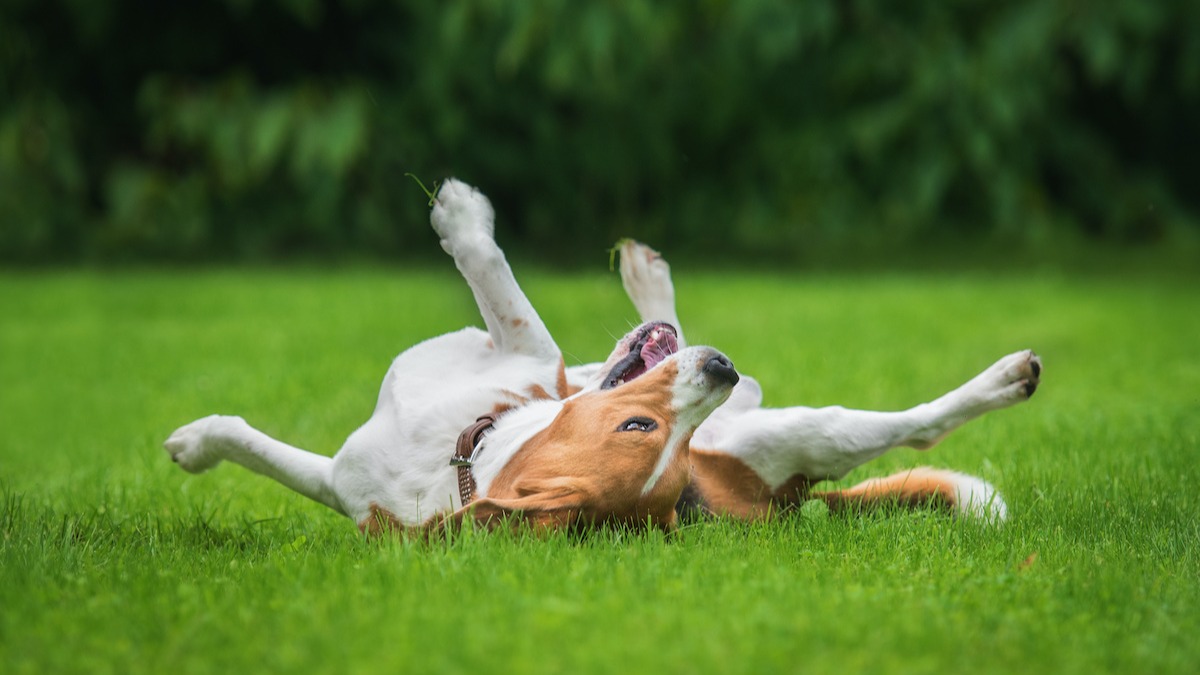
Try again later in the day for another five to 10-minute session. At this point, the dog should understand the command and the rolling process. Once your pet rolls over when commended, you no longer need to encourage it with treat each time. Always compliment the dog when it performs correctly. Avoid making the mistake getting frustrated if it doesn’t seem to master the tricks right away. If you are getting impatient or intolerant, Stop the session.
- Shake Hands
Teaching dogs how to shake hands is basically an easy training the fact dogs tend to raise their paw when asking for a treat. First, put the dog in a “sit” position. Then, continue by putting a treat in your hand and slowly move it towards the ground closed to the dog’s paw.
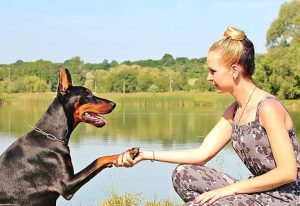 When the dog starts raising its paw in anticipation, use the verbal cue “shake,” give it the treat, and then congratulate the dog enthusiastically. As you making progress, hold your hand gradually higher and higher to trick the dog to raise its paw higher in order to gain the treat. Your goal is to have the canine raise its paw to chest height.
When the dog starts raising its paw in anticipation, use the verbal cue “shake,” give it the treat, and then congratulate the dog enthusiastically. As you making progress, hold your hand gradually higher and higher to trick the dog to raise its paw higher in order to gain the treat. Your goal is to have the canine raise its paw to chest height.
Keep practicing until the trick is completely mastered, and always use the same paw for training.
Switch to the other paw Once the dog holds its paw up on your command and obey promptly. The key here is to use another command such as “other” so that the dog can learn that one command works for its right paw and the other one for its left. Once the dog is shaking hands on command, feel free to stop using the treats. You can continue to praise the dog…
- High Five
As the canine masters the “shake” command, it becomes easier to teach it to do a “high five.” Start by working 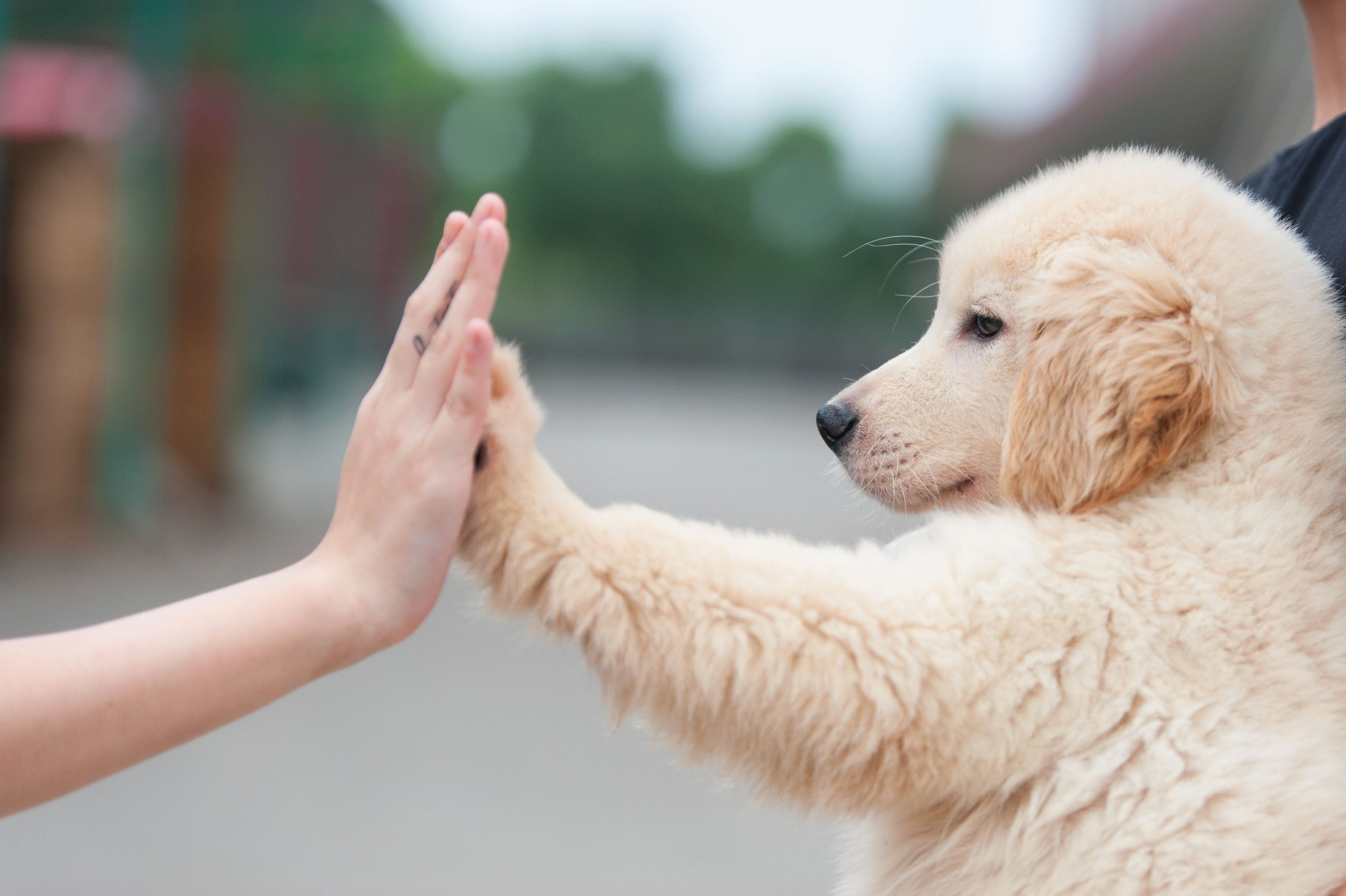 on the “shake” command, but begin to hold your palm out and as the dog hits your palm, give the command “high five.” Remember to treat and praise your dog promptly. Your goal here is to trick the canine to raise its paw as high as possible in order to be able to touch your open palm.
on the “shake” command, but begin to hold your palm out and as the dog hits your palm, give the command “high five.” Remember to treat and praise your dog promptly. Your goal here is to trick the canine to raise its paw as high as possible in order to be able to touch your open palm.
We hope that we helped you understand your pet dogs even more! If you have questions or a suggestion, don’t hesitate to share it to us by commenting below.

